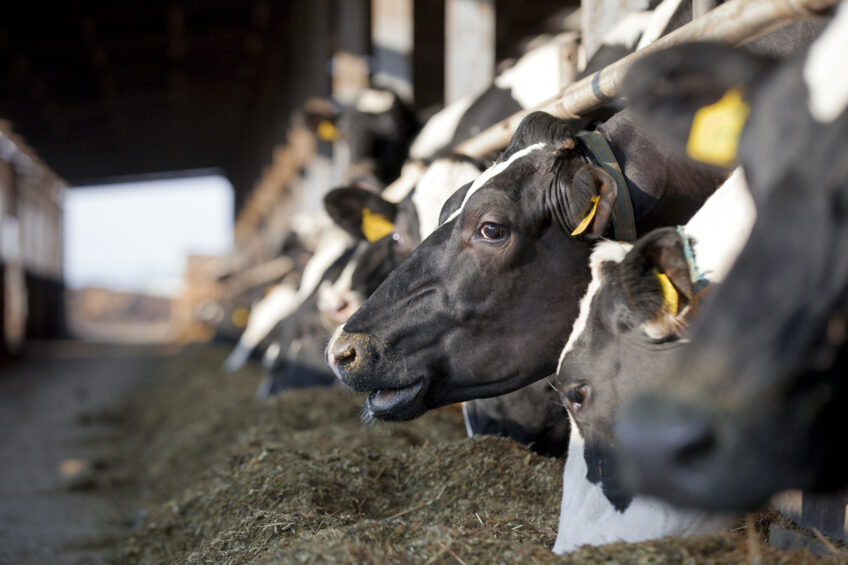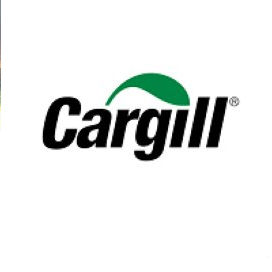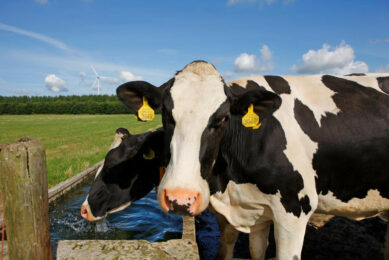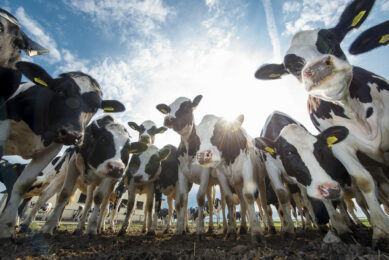Unlock the fibre potential of dairy rations

There is a huge amount of potential feed value in forages just waiting to be tapped in to. Achieving this relies on increasing the digestibility of these high fibre feedstuffs.
Feed additives have been developed that can break down high fibre feedstuffs, by as much as 8%, thereby improving its digestibility and unleashing energy: additional energy that can be converted into milk. This can result in milk yield increases of 7% in early lactation cows.
Locked up energy
While cereals are up to 90% digestible, a good grass silage will be 70-80% digestible depending on geography, dropping to only 40% in low quality forages. Producers could therefore be wasting a third of the feed value of the forage, i.e. the forage that leaves the cow undigested. It is surprising that many producers accept this, considering the effort they put into growing, harvesting and storing their forages.

As the industry strives to improve feed efficiency in dairy units, there is no doubt that improving forage use is a priority.
2 aspects can be considered to achieve more efficient use of forages:
- To improve the quality of forages provided to the cow. Better quality forages will have lower fibre content, which means increased digestibility, and feed efficiency.
- Is to improve the fibre digestion in the rumen. For years, this has been part of Cargill’s ruminant research programme.
Typically, between 35% and 45% of a cow’s ration is made up of neutral detergent fibre (NDF), contained in the cell wall. Most of it comes from forages. NDF is, by far, the largest portion of the diet, but it is also the least digestible component.
The challenge to improve fibre digestion is, to break the link between lignin and hemicellulose or other cell wall components, so releasing the feed value in the form of energy that is otherwise trapped in the cell wall. This energy can then be used for milk production.
Natural fibre-breaker
The natural feed additive Amaferm* can play a part in improving fibre digestion. It is the only feed additive in the EU that is registered as a fibre digestion enhancer for dairy cows. Rumen bacteria, protozoa and fungi all digest feed to the benefit of the cow, but the rumen fungi are crucially important in fibre digestion, as they initiate fibre digestion and manufacture the most powerful enzymes for digesting fibre.
The activity level of the rumen bacteria depends on access to this plant cell wall material and, proving there is an optimum rumen pH value of 6.3, a high level of cell wall components can be digested. The additive works by providing rumen fungi with the nutrients they need to accelerate fibre digestion. It helps break down the linkages so the plant material becomes more available for digestion by rumen bacteria.
Science based evidence
Compiling many peer-reviewed papers shows a positive milk yield response where the product was added to dairy cow diets. Shown in Figure 1, this reflects one of the largest databases of published milk trials on a feed additive in the market today.
15 of the 37 papers reported trials with early lactation cows and showed a 7% increase in milk yield where it had been included in the diet. Out of those 37 results, this feed additive improved milk production in 80% of the cases and 100% of the cases for early lactation studies.
Strong local application on farm
Amaferm has been widely applied across Europe with local farm trials to prove its effectiveness. On-farm trial work in the UK showed an increase in milk yield and quality production by adding it to their total mixed ration (TMR), based on good quality silages, compared with the control group, as shown in Table 1.
To conclude, the product provides an increase in milk income and Income Over Feed Cost (IOFC). Based on the current milk price, supplementation with the additive generated an additional £0.43 per cow (€0.47) in milk income. Additionally, IOFC can be increased by 5-8% by Amaferm use, depending on the milk and feed prices.
Comparable returns have been recorded in trials both in Europe and the US, making the inclusion of this feed additive in dairy cow rations a cost-effective benefit and helping ruminants to do what they are best at: to create high quality end products such as milk.
*Amaferm is a registered trademark of BioZyme Incorporated
Authors: By Jolien Veneman, Cargill ruminant specialist and Philip Ingram, Cargill ruminant technology application specialist
Join 13,000+ subscribers
Subscribe to our newsletter to stay updated about all the need-to-know content in the dairy sector, two times a week.




